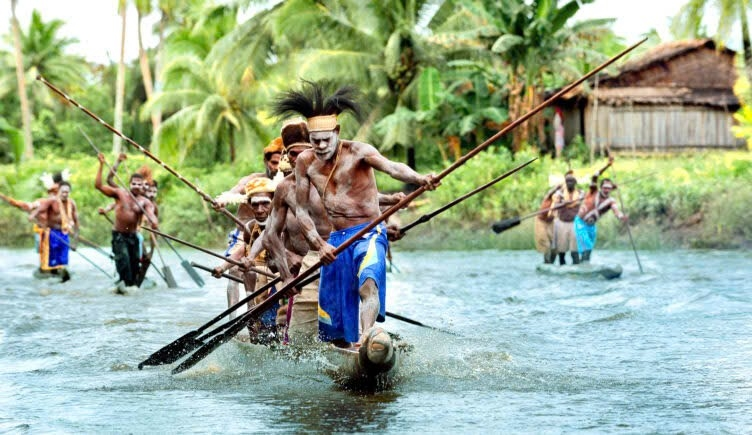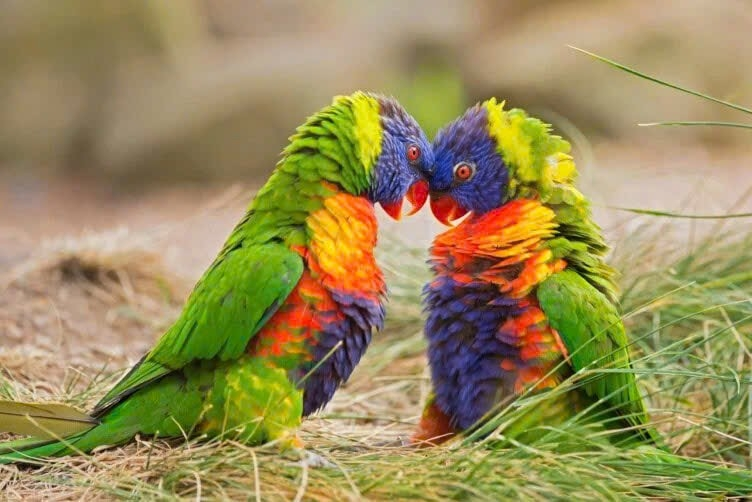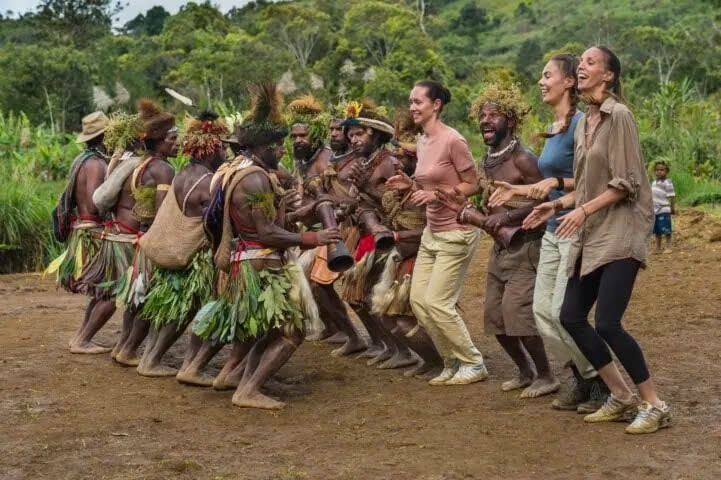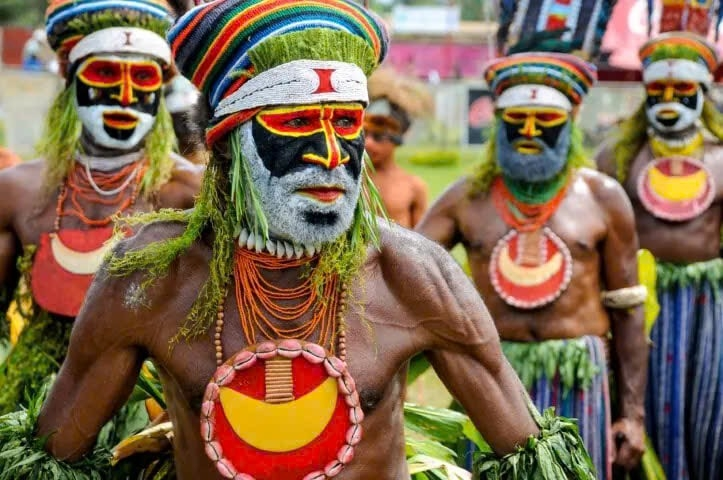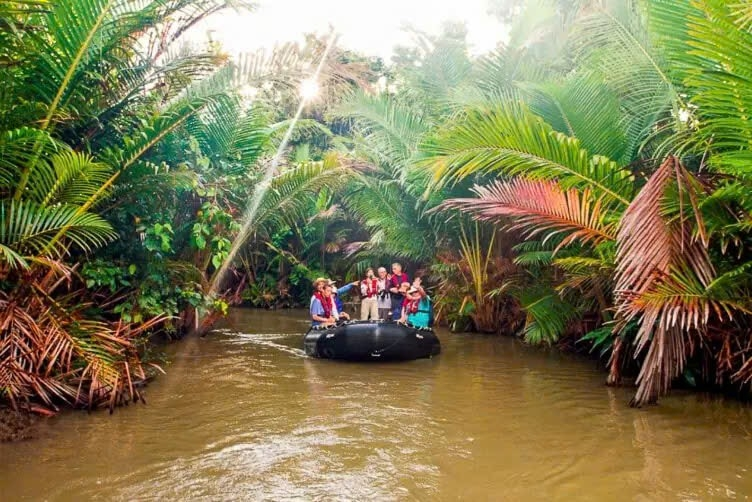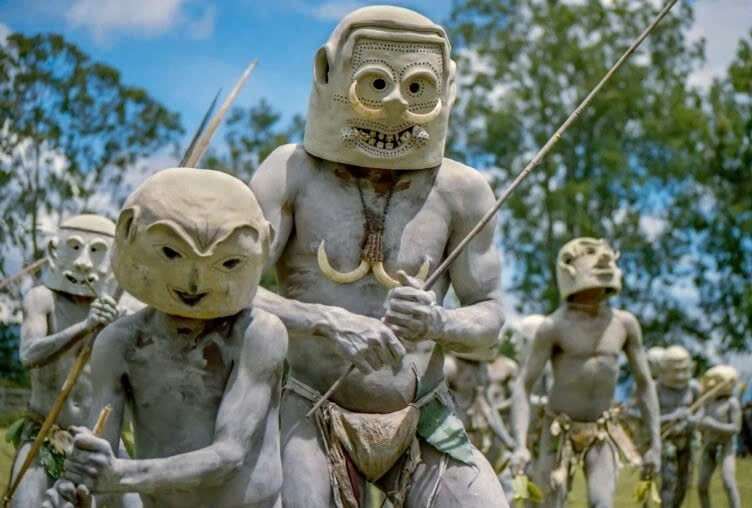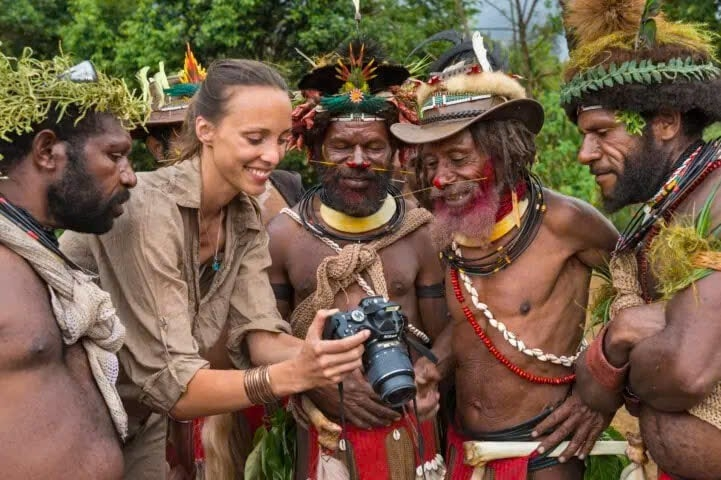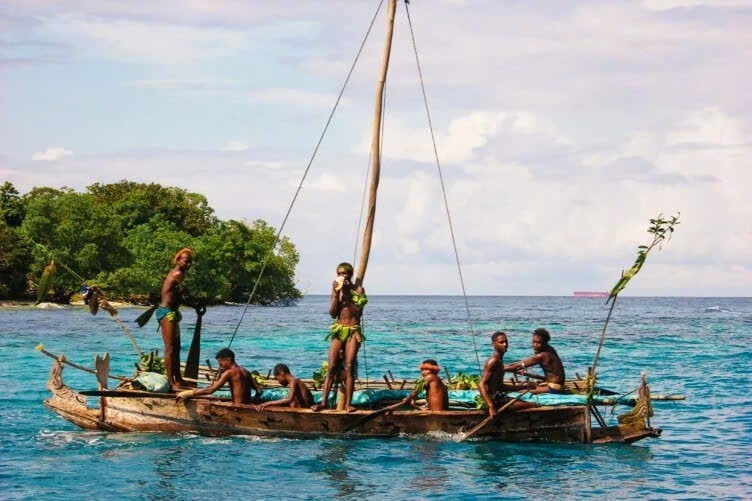Expedition Cruise 17 Days: Explore the Wonders of Papua New Guinea, the Solomon Islands, and Vanuatu
Expedition Cruise 17 Days: Explore the Wonders of Papua New Guinea, the Solomon Islands, and Vanuatu
Trip Overview
Enjoy incredible cultural encounters on Loh Island, join Malaita's Kwaio people in a sacred dance, and observe the ancient Rom Dance on Ambrym Island, where indigenous culture continues unchanged. Discover one of the conservation jewels of the South Pacific on Tetepare Island and snorkel Marovo Lagoon, the largest saltwater lagoon in the world. Visit villages on culturally-rich Malaita Island where traditional Malaitan shell-money is still made, used as a dowry and worn as a status symbol. Experience a kaleidoscope of cultures in Vanuatu, where more than a hundred indigenous languages are spoken. This expedition embraces some of these cultures and languages, as you explore one of the happiest places on the planet.
Throughout Melanesia there are spectacular reefs that are home to masses of fish and coral gardens of every color. These waters offer some of the greatest marine diversity and snorkeling in the world and you will have the opportunity to appreciate the beauty beneath the waves. Whether you are snorkeling, swimming, or kayaking, this ocean aquarium is waiting to be explored and discovered.
For birders, this itinerary offers once-in-a-lifetime species on remote islands where few have been before, and endemic birdlife such as the Solomon sea eagle, or the Vanikoro white-eye, may be seen. The birding potential is exceptional, and to allow birders to maximize the opportunities on the expedition there is an optional specialized birding program with customized excursions.
Trip Highlights
- Experience a kaleidoscope of the island cultures of Melanesia
- Search for a tremendous variety of birdlife including Solomon sea eagles and Vanikoro white-eyes
- Active options including snorkeling and kayaking
Itinerary
Day 1: Cairns, Australia
Arrive in the urban tropical paradise of Cairns, gateway to the natural wonders of the Great Barrier Reef and Wet Tropics World Heritage Rainforest, and transfer to your hotel where the group will spend the first night of the expedition. This evening meet your fellow voyagers and expedition guides over dinner at the hotel.
Day 2: Port Moresby, Papua New Guinea
Enjoy breakfast at the hotel before boarding your flight to Port Moresby, the bustling gateway and capital of Papua New Guinea where village and urban life exist side-by-side. Enjoy a visit to the National Museum and Arts Center, exhibiting one of the finest collections of primitive art in the world before boarding Heritage Adventurer this afternoon. The captain and expedition team will be waiting to greet you on arrival and show you to your cabin. You will have time to settle in and familiarize yourself with the ship; you will also meet your expedition team and learn about the voyage plans.
Days 3-4: Louisiade Archipelago, Deboyne & Tagula Islands
After a morning at sea, arrive during the early afternoon in the Louisiade Archipelago, which stretches some 250 miles along the northern rim of the Coral Sea and is one of the great island arcs of the South Pacific. Rarely visited by outsiders, this area is a wonderland of literally hundreds of islands, lagoons, and extensive barrier reefs and home to the seafaring Dobu people. With two days set aside for exploration, there will be opportunities to snorkel, perhaps encounter the manta rays that are known to frequent these waters at recognized feeding stations or find a Japanese A6M2 Zero, the main fighter plane of the Imperial Japanese Navy, sitting intact in the shallows. Tagula Island is the largest in the archipelago. A gold rush in 1889 brought the island to the world's attention but today it is the rich tropical forest and endemic wildlife that you will seek including the Tagula honeyeater and butcherbird plus endemic frogs and lizards.
Day 5: D'Entrecasteaux Islands
Awake this morning in the volcanic island chain of D'Entrecasteaux Islands. One highlight will be exploring the island's geothermal area with hot springs and bubbling mud pools surrounded by lush vegetation. Nearby, snorkel among thousands of colorful coral and fish attracted by underwater hot springs flowing through small vents in the ocean floor that send bubbles toward the surface. Described as like “swimming in champagne,” the water is incredibly clear and the marine life is renowned for its abundance and the spectacular sizes the coral grows to. You will also visit Dobu Island; this small island is a critical link in the "Kula Ring" that was famously investigated and described by the anthropologist Bronislaw Malinowski.
Day 6: Trobriand Islands
Positioned in the Solomon Sea and historically known as the “Islands of Love,” the Trobriands offer a glimpse of traditional culture largely unspoiled by outside influence. During your visit you will enjoy picture-postcard white-sand beaches, colorful villages, aquamarine water, and enchanting marine life. Meet the Trobriand islanders and experience energetic, time-honored dances that celebrate fishing and the seasonal yam harvest. Learn about the history of the “Kula Ring,” a circular pattern of ceremonial trade relationships that binds the islands of Milne Bay and eastern Papua New Guinea together in a long-established network of friendship. These islanders are also renowned for the exquisite quality of their ebony wood-carvings, often decorated with mother-of-pearl shell inlays. You will also snorkel among kaleidoscopic coral reefs populated by parrotfish, neon damsels, and other brilliantly-hued species.
Day 7: Woodlark Island
Blessed with both biological and mineral treasure troves and more than 2,000 years of human culture, Papua New Guinea's remote outpost of Woodlark Island and its people are caught up in the push and pull of conservation versus mining. Its local community remains one of the few self-sufficient, subsistence-based populations in the world while its flora and fauna, left to evolve in seclusion on this unique rainforest island, include more than 40 species found nowhere else on Earth, with scientists predicting many more still awaiting discovery. Recent discoveries include a new species of frog and lizard. At loggerheads with this, Woodlark has also been deemed one of the largest and most profitable gold mine developments of recent years. During your time here you will enjoy village visits and look for some of the island's unique wildlife including the IUCN Red List endangered Woodlark cuscus, endemic lizards, plants, amphibians, and insects, and perhaps even discover new species.
Day 8: Bougainville Island
Today we discover the treasures of Bougainville, long isolated and in a strange way protected due to the conflict that swirled around its shores. High on many travelers' wish lists, this autonomous region within Papua New Guinea magnificently marries rugged, jungled terrain with amazing coral reefs offshore and is home to some of the greatest biodiversity in the region both above and below the water. Lying to the east of the country's mainland and north of the Solomon Islands, it comprises two main islands and several outlying islands and atolls, making it both remote and hard to reach, but perfect for exploration by expedition ship. Discover Bougainville's strong ties and connections with the Solomon Islands, which is reflected in their music, culture, and language.
Day 9: New Georgia Islands
The volcanic New Georgia Islands are found in the Western Province of the Solomon Islands and are characterized by extensive reefs and lagoons, rugged terrain, and an abundance of rivers. Nature enthusiasts will relish landing on Kolombangara Island, where the plan is to visit the Imbu Rano Eco Lodge and Conservation Area that protects the island's central peak, and search for the rare Roviana rail along with other endemic bird species. Snorkel the wreck of a US Navy Grumman F4F-3 Wildcat (carrier version) WWII plane off a nearby tiny island where the surrounding reefs are home to some of the highest fish counts in the world. Stock up on the local currency to purchase the wood or stone carvings the people of the Western Province are so famous for.
Day 10: Nissan Island
Uninhabited for 150 years, this rugged island cloaked in rainforest and fringed with coral reefs is home to one of the Solomon Islands' leading community-driven conservation projects: Tetepare Descendants' Association. Receiving international recognition for its conservation and archaeological significance, three species of turtle, including the endangered leatherback, nest on its beaches while other species inhabiting the island and surrounding waters include dugong, the world's largest skink, endemic Tetepare white-eye, and many more. A highlight of the voyage, this afternoon the plan is to explore and snorkel Marovo Lagoon, the largest saltwater lagoon in the world. Breathtaking both above and below the water, Marovo features a unique, double-barrier reef surrounding the extinct volcanoes of the main central islands and light-filled cave systems teeming with marine life. Globally outstanding marine biodiversity, coral reefs, estuarine and island complexes, mangrove forests, and sea grass beds await exploration.
Day 11: Malaita
Mountainous Malaita is home to one-third of the Solomon's total population and features pristine rivers and unexploited tropical forests. This morning you will explore the clear and calm waters that surround the island. In the afternoon, the group has been invited by the world-renowned Kwaio People, led by Chief Esau, to discover their traditional way of life that the community has fiercely guarded alongside their ancestral lands. This invitation represents a rare privilege and is made possible by our ongoing connection with the community and our assistance with the development of innovative community conservation programs. This is a once in a lifetime opportunity to spend time in the company of some of the most authentic, yet innovative, communities in the region.
Day 12: Makira
Makira is the most easterly of the main islands in the Solomon's archipelago. This morning we anchor in the calm waters of Star Harbour. Join the naturalists for a Zodiac exploration of the abundant mangrove forests that line the shores, and take a short walk to Makira's south coast where the villagers live much as they have for millennia. You will spend time with the locals, who share with you their traditional song and dance. If you are lucky, the local boys might be surfing on their hand-carved palm wood boards.
Day 13: Nendö, Temotu Province
Nendö is the largest of the Santa Cruz Islands, which lie to the southeast of the Solomon Islands. The Spanish navigator Álvaro de Mendaña de Neira unsuccessfully attempted to establish a colony in 1595. Biologically these islands share more in common with Vanuatu. It is also the home of red feather money, sourced from the scarlet honeyeater. Watch the manufacture of red feather money, and join the locals in dances that reverberate through the ages.
Day 14: Vanikoro
Today you'll explore the archipelago of Vanikoro, with its five islands encapsulated by a dramatic barrier reef that offers superb snorkeling. French explorer Jean-Francois de Galaup, comte de La Pérouse, famously disappeared here after both his vessels, La Boussole and Astrolabe, struck the reef in 1788. On the shore you will visit a monument to Le Pérouse, erected by fellow explorer Dumont Durville in 1827. Join the naturalists on a forest walk in search of the endemic Vanikoro white-eye and monarch, or marvel at the delicate Vanikoro orchid. You also have a good chance to see the recently rediscovered Vanikoro flying fox, considered extinct until just recently.
Day 15: Espiritu Santo
Today you will explore Vanuatu's largest Island, Santo, the location of James Michener's Tales of the South Pacific. Indulge in a swim in the crystalline waters of Champagne Beach with its famed powdery white sand. This afternoon, enjoy Zodiac cruises to the iconic blue holes of Santo. For those with an interest in the history of the island, there is a visit to Luganville and Million Dollar Point.
Day 16: Ambrym
Visit Ambrym, renowned as the island of volcanoes and magic throughout Vanuatu. You'll head ashore at Ranon on the northern coast where the traditional Rom dance is still practiced and custom carving is alive and well. A walk through the forest brings you to the "arena" where masked dancers emerge from the forest. The forests of Ambrym offer some excellent walks to go in search of the local birds and plants, accompanied by the naturalists. This afternoon, enjoy a final snorkel excursion.
Day 17: Port Vila, Vanuatu
Arrive in Port Vila in the early morning and disembark. Upon disembarking, a transfer to your central city hotel or the airport will conclude your voyage. To allow time for disembarkation procedures we do not recommend booking flights from Port Vila before midday.




